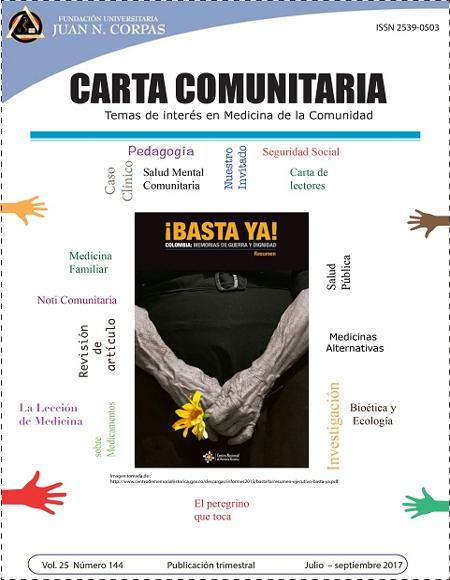(1) Manuel Coveñas Naquiche. Razonamiento matemático teórico práctico. Cuarta edición. Año 1998.
(2) La Medicina basada en la evidencia. Revista JAMA. Edición española. Año 1997.
(3) Guyatt GH. Evidence-based medicine. ACP J Club. 1991; 114:A–16.
(4) Evidence-Based Medicine Working Group. Evidence-based Medicine: A New Approach to Teaching the Practice of Medicine. JAMA. 1992; 268:2420-5.
DOI: https://doi.org/10.1001/jama.268.17.2420
(5) Sackett DL, Rosenberg WM, Gray JA, Haynes RB, Richardson WS. Evidence Based Medicine: What it is and what it isn’t. BMJ. 1996; 13:71–2.
DOI: https://doi.org/10.1136/bmj.312.7023.71
(6) Pita S, López Galparsoro I. Unidad de Epidemiología Clínica y Bioestadística. Complexo Hospitalario Juan Canalejo. A Coruña Cad Aten Primaria 1998; 96-98.
(7) Barratt A, Wyer P, Hatala R, McGinn T, Dans A, Keitz S, Moyer V, Guyatt G, for the Evidence-Based Medicine. Teaching Tips Working Group. Tips for Learners of Evidence-based Medicine: 1. Relative Risk Reduction, Absolute Risk Reduction and Number Needed to Treat. JAMC. 17 AOÛT 2004; 171(4).
DOI: https://doi.org/10.1503/cmaj.1021197
(8) Shakespeare T, Gebski V, Veness M, Simes J. Improving Interpretation of Clinical Studies by Use of Confidence Levels, Clinical Significance Curves, and Risk-benefit Contours. Lancet 2001; 357: 1349-53.
DOI: https://doi.org/10.1016/S0140-6736(00)04522-0
(9) Whitley E, Ball J. Statistics Review 3: Hypothesis Testing and p values. Critical Care 2002; 6: 222-5.
DOI: https://doi.org/10.1186/cc1493
(10) Montori V, Kleinbart J, Newman T, Keitz S, Wyer P, Moyer V et al. Tips for Teachers of Evidence-based Medicine 2: Confidence Intervals and p Values. CMAJ 2004; 171:1-12. Available on: http://www.cmaj.ca/cgi/data/171/6/611/DC1/1
DOI: https://doi.org/10.1503/cmaj.1031667









